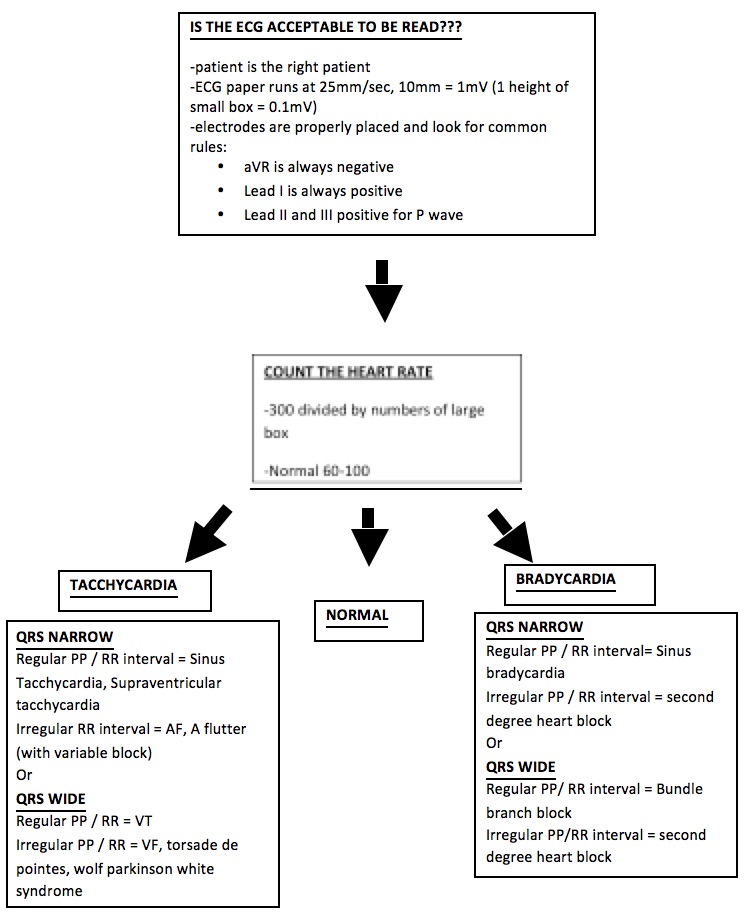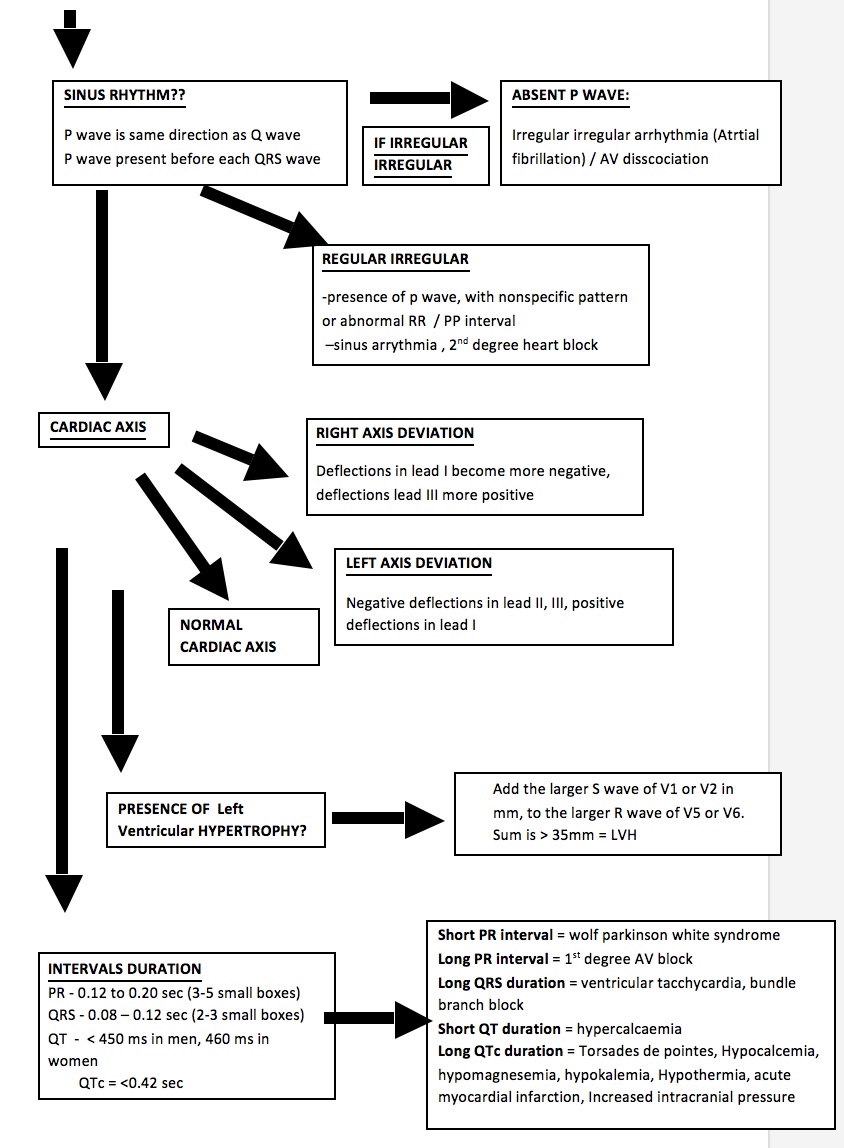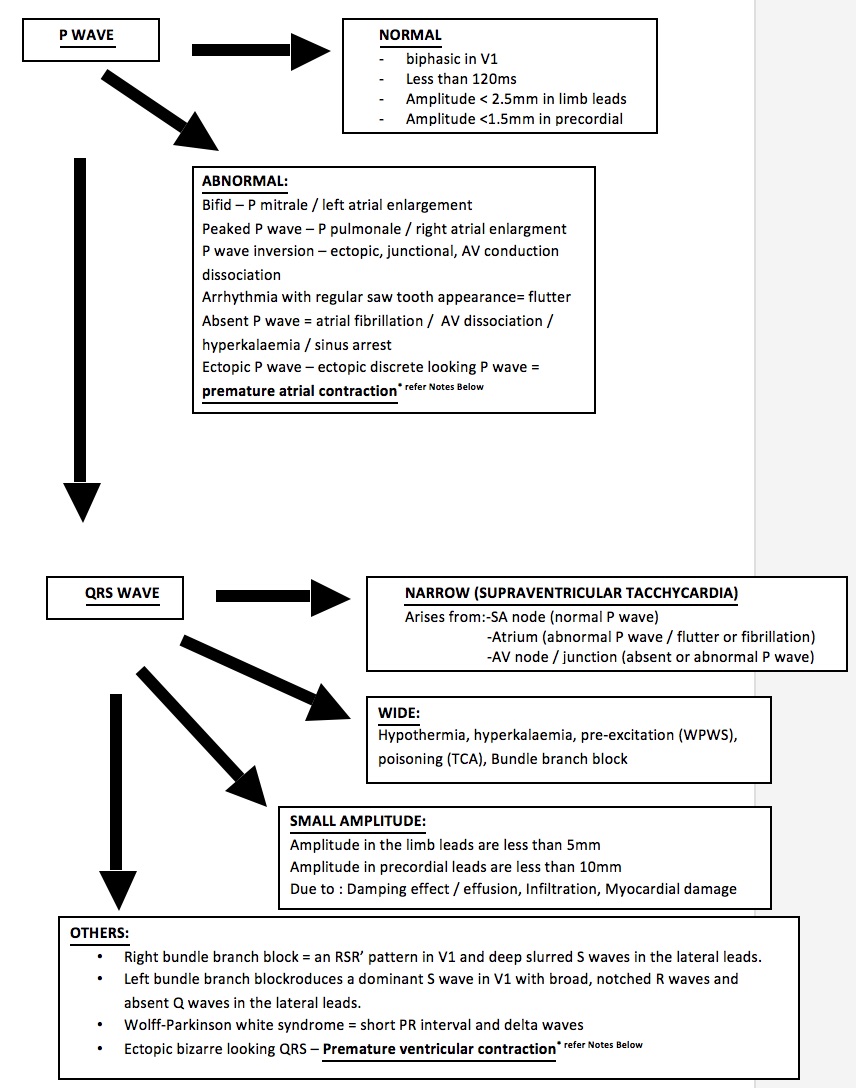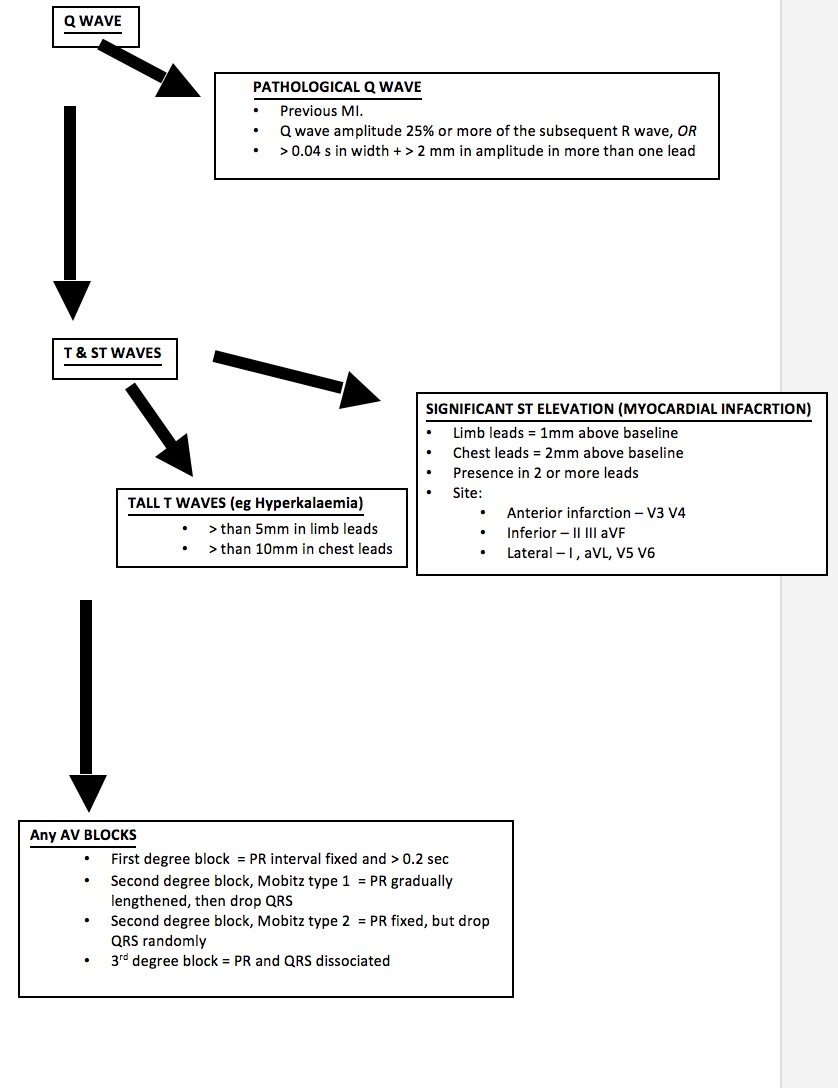 Reading ECG is important not only for emergency medicine, but also for any medical personnel. Having systematic approach, but easy to be followed is definitely helpful, not only for detecting common problems, but also not to miss any gross findings.
Reading ECG is important not only for emergency medicine, but also for any medical personnel. Having systematic approach, but easy to be followed is definitely helpful, not only for detecting common problems, but also not to miss any gross findings.
Here is one of the approaches, by looking each component according to sequences. Starting with counting the heart rate & determine the rhythm, followed by cardiac axis and ventricular hypertrophy, then intervals and looking at each P wave, QRS complex, ST segment and T waves:





Hopefully this systematic approach is really helpful in daily ward work and even for primary care givers. It is easy to be followed even by houseman and medical students. No more excuses of unable to read electrocardiogram, or not sure what to begin with!
This article was written by Dr Shaiful Ehsan.
Dr. Mohd Shaiful Ehsan is a family medicine master trainee in the International Islamic University Malaysia.
References:
- The ECG Made Easy by John R. Hampton
- Oxford Clinical Medicine
- ECG Library and Clinical Cases in Cardiology (lifeinthefastlane.com)
- Sarawak Handbook of Medical Emergencies
[This article belongs to The Malaysian Medical Gazette. Any republication (online or offline) without written permission from The Malaysian Medical Gazette is prohibited.]
